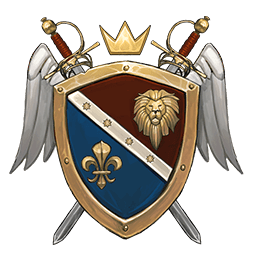LORE

Covering the transition between the Late Middle Ages and the period known as the Enlightenment, the Renaissance spreads from the 15th to the 17th century.
By many accounts, it can be seen as the natural extension of the medieval era, but it also saw a resurgence of thoughts, texts and influences from Antiquity, with sweeping changes in art, philosophy and science inspired by humanism, recent innovations and a rediscovery of ancient ideas.
The Renaissance began in Italy, from which it spread into the rest of Europe until the 16th century. It was influenced by the experiences of Italian city-states such as Florence, but also by important events such as the Ottoman conquests, which caused a large exodus of Greek scholars into western Europe. It also coincides with the Age of Discovery and the early colonization and mapping of most continents by Europeans.
The long term impacts of the Black Death and the controversial schisms and corruption scandals surrounding the Catholic Church also contributed to shake the social foundations of the Late Middle Ages and assist the transformation into this tumultuous period of transition.
Far from an idealized rebirth of Europe or some mythic era of reason, the Renaissance was still certainly a period of great change. It saw some of the deadliest wars of religion, the accelerated decay of the feudal social order, the increasing of social, racial, and gender inequalities and the normalization of witch-hunts. But it was also the golden age of art and a period of great achievements.
Characters
Aside from reenactment, when time comes to bring the Renaissance into LARP, it is often an inspiration for some fantasy settings, and thus the whole time period can see itself compressed into a few character archetypes, often related to famous historical figures or well known occupations from the time period. One of the most popular Renaissance characters in LARP is certainly the musketeer, as found in Dumas’ famous novel and the larger swashbuckler genre in literature. Inspired by the real life musketeer regiments of the French Royal Guard, they evoke daring acts of bravery, panache, wit, and the often flawed pride that brought the practice of duels to its pinnacle. Rapier-wielding fencers, adventurers and ambitious lowly nobles can take inspiration from this famous trope in LARP.
The Renaissance also saw the emergence of large gangs of outlaws and bandits, often composed of deserters or discharged soldiers that roamed the countryside and pillaged rural communities and road travellers. More organized and dangerous than the bandits of previous time periods, they represented a serious threat to many states. The modern depiction of the brigand or highwayman is heavily influenced by these groups that first appeared during the Renaissance.
Another iconic figure of the Renaissance is the aptly named Renaissance man. Simultaneously a scholar, artist, scientist, philosopher and visionary, this historical archetype is best exemplified by Leonardo da Vinci and implies unparalleled creative genius as well as universal curiosity. Similarly, other famous Italians from the Renaissance can all be mentioned as archetypes in their own right: Lorenzo de’ Medici as the banker, merchant and patron of the arts; Christopher Columbus as the navigator and explorer; Niccolo Machiavelli as the diplomat, political schemer and philosopher.
Les Artisans d'Azure
ASSASSIN'S LEATHER HALF-CAPE
This amazing half-cape is a fashionable accessory that will undoubtedly add style and panache to your next LARP character, may it be a noble, duelist, assassin, musketeer or dark elf. Made of thick and sturdy materials, this cloak is tough enough for LARPing without compromising its incredible look.
Sword of the Renaissance
The Rapier
The Rapier is a useful one handed sword for all musketeers, duelists and swordsmen alike. Designed for duels and civilian defence, the rapier evokes elegance, prestige, and nobility, making it a perfect weapon for gentlemen, aristocrats, daring swashbucklers, and adventurous courtiers.
Costumes
When thinking of the Renaissance, for LARPers, it is important to remember that this time period sees the final end of the tunic and the emergence of the shirt as the main men wear. Long clothes are reserved to upper layers such as coats and even cloaks are now shorter and more fashion-oriented than purely practical. Broad shoulders and puffed sleeves are in fashion. Women may be seen wearing shirts and blouses with long skirts, and high status clothes are more intricate and luxurious than ever before during the medieval period, with tailor turning into a very important occupation in noble circles. Form-fitting doublets and tights for men are also a staple of this time period.
In terms of armaments, the Renaissance saw the emergence of a few new weapon types as well as the perfecting of more ancient designs. Swords evolved to display complex hilts and into more extreme shapes. If a good cut and thrust sword was still common during the early days of this era in the form of the arming sword, they also took more point-centered shapes as seen with the famous rapier and the small sword, designed for gentlemen duelling.
The Renaissance is also the golden age of massive two-handed swords, with the emergence of flamberges, doppelsoldners, espadons and Scottish claymores as enormous weapons of war, larger than any blade seen in earlier times. Lastly, it was the playground of the pike and shot, with the battlefield being taken over by large groups of professional soldiers armed with pikes, polearms and more commonplace firearms.
Our custom projects | Renaissance
The Renaissance theme is very popular in the LARP community. Here are some custom projects we're done for our customers over the years.
We crafted this long coat from supple red leather with a glossy finish, and golden topstitching. The doubling is made from red and gold brocade (the coat design is inspired from Jaime Lannister's outfit from GOT), with additional black and gold ornamentation. The camisole is made of black linen with embroideries and gold cabochon at the shoulders.
This luxurious eastern European inspired outfit is a medieval fantasy costume made for a politically savvy character from the Chimera guild from Bicolline. Made of genuine silk shantung with a cotton lining, the Ottoman kaftan overcoat presents nuances of burgundy, marine blue, and purple for a very rich and opulent color pallet.
This custom made imperial coat is made from a combination of Prussian velvet and royal blue Strasbourg polyester, with an inner lining in red floral fabric. Decorated with brass plated antique cabochon and rivets, this gorgeous piece also benefits from golden stitching around the shoulders and the length of the coat to highlight the patterned fabric and the padding on the shoulders.





































































